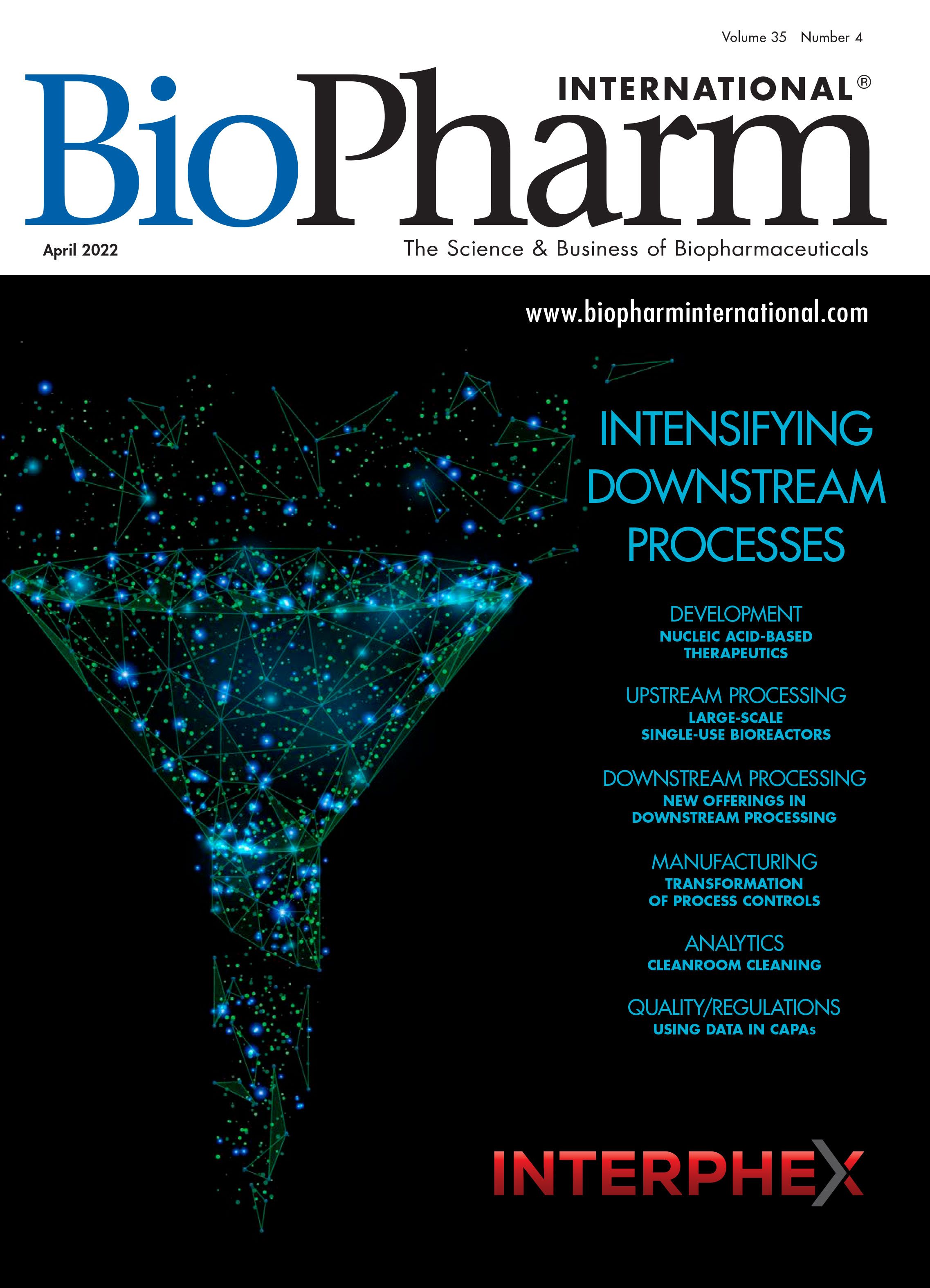What’s New in Downstream Processing?
The past year of downstream processing has brought innovations in pH sensitive antibody purification, single-use fermentation separators, and more.
Molekuul.be - stock.adobe.com

The biopharmaceutical industry advanced various innovative downstream technologies throughout 2021. Whether they are novel proteins designed for use in low pH ranges or single-use fermentation separation tools, looking at new products can help one not only understand the current state of the biopharmaceutical industry, but also glean insight into the industry’s future direction.
pH Sensitive Purification
Repligen partnered with Navigo Proteins, a scaffold protein engineering and custom affinity resin development company, to create the novel protein A ligand, NGL-Impact A Hi pH, in September 2021. According to the company, this is the first protein designed for use in antibody aggregation in low pH elution buffers, which can resolve challenges associated with Fc-fusion proteins.
Protein A affinity ligands are used in chromatography media to enable affinity purification of monoclonal antibody (mAb)-based drugs. According to Repligen, while this protein was specifically developed for low pH elution buffers, because it has demonstrated high performance across all antibodies and has a broad pH operating range, it can also be considered a “platform.”
According to Ralf Kuriyel, Repligen senior vice-president, R&D, the new ligand addresses one of the major pain points in antibody drug purification—the formation of aggregates during Protein A elution. In customer evaluations, it demonstrated two-fold lower levels of aggregate formation while maintaining high dynamic binding capacity and caustic stability (1).
Single-Use Cell Cultures Separator
GEA, a German systems and components supplier, announced its kytero single-use separator, intended for use in fermentation solutions and cell cultures, in March 2021. It is equipped with GEA Westfalia Separator disk stack technology, which is designed for maximum yield, high separation efficiency, and gentle product handling.
The kytero is designed to combine the high performance of larger GEA stainless-steel pharmaceutical centrifuges with the benefits offered by disposable components that do not require cleaning. The technology relies on centrifugal separation, rather than filter-based harvesting, for increased clarification efficiency (2).
Single-Stage Recombinant Protein Purification
3M Health Care’s 3M Harvest RC clarifier, announced in June 2021, uses a proprietary fibrous chromatography media to condense three process steps into a single-stage purification of recombinant protein therapeutics. The company has noted that, because the clarifier introduces chromatographic separation to remove soluble impurities earlier in the process, it ultimately results in cleaner effluent.
3M Health Care has stated that the clarifier provides mAb recovery of more than 95% and can be used with cultures with different cell densities, high-packed cell volumes, and cell culture characteristics. The quaternary ammonium functionalized polypropylene fiber and 0.2 μm polyethersulfone membrane provides scalable clarification (3).
Recombinant-Based Affinity Column
In April 2021, Tosoh Bioscience introduced the TSKgel FcR-IIIA-5PW high-performance liquid chromotagraphy (HPLC) column in its Fc gamma receptor (FcRy) affinity chromatography portfolio for antibody drug analysis. The product is a semi-preparative affinity column based on a recombinant FcyRIIIA receptor ligand bonded to porous 10 μm polymethacrylate particles. The new column has the ability to be loaded with up to 5mg of mAbs.
Along with the FcR-IIIA-NPR, the TSKgel FcR-IIIA-5PW separates antibodies into three fractions according to the affinity of their Fc region for a particular Fc receptor (i.e., FcyIIIa), corresponding with different mAb glycoforms and their antibody-dependent cellular cytotoxicity activity. The new column represents a tool that links the FcyIIIa receptor affinity with mAb function and structure. Characterizing each fraction with orthogonal methods connects FcyIIIa receptor affinity to structural causes and functional effects (4).
References
1. Repligen, “Repligen and Navigo GmbH Announce Launch of Industry-First Protein A Ligand for Purification of pH Sensitive Antibodies,” Press Release, Sept. 9, 2021.
2. GEA, “GEAIntroducesSingle-Use Disc Stack Separator Kytero for Cell Harvesting at Achema Pulse,” Press Release, March 24, 2021.
3. 3M Health Care, “New 3M Harvest RC clarifier brings chromatography technology to harvest clarification with a single-stage solution for upstream processes,” Press Release, June 1, 2021.
4. Tosoh Bioscience, “FractionCollection of Antibodies with Different FcR Affinities for Characterization,” Press Release, April 19, 2021.
About the author
Grant Playter is the Assistant Editor for BioPharm International.
Article Details
BioPharm International
Vol. 35, No. 4
April 2022
Pages: 24–25
Citation
When referring to this article, please cite it as G. Playter, “What’s New in Downstream Processing?,” BioPharm International 35 (4) 24–25 (2022).

Thermo Fisher Opens Advanced Therapies Collaboration Center in California
April 18th 2025The 6000-square-foot facility will provide cell therapy developers the support they need to transition to CGMP manufacturing, and an expanded footprint of the new center is expected to open in Philadelphia later in 2025.